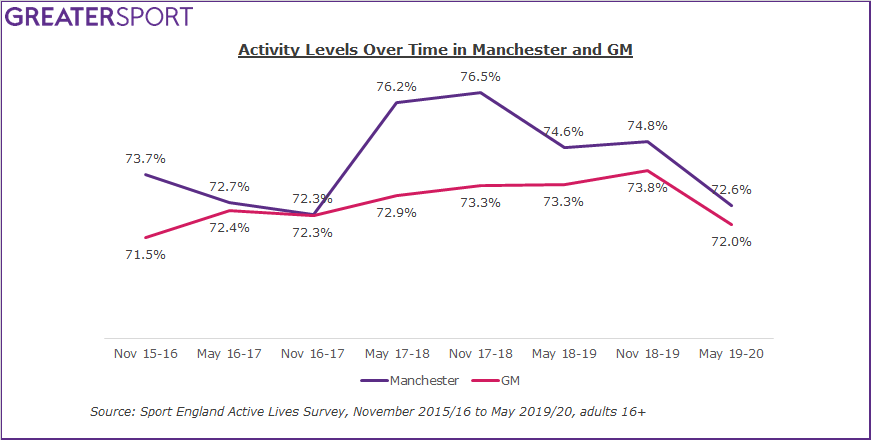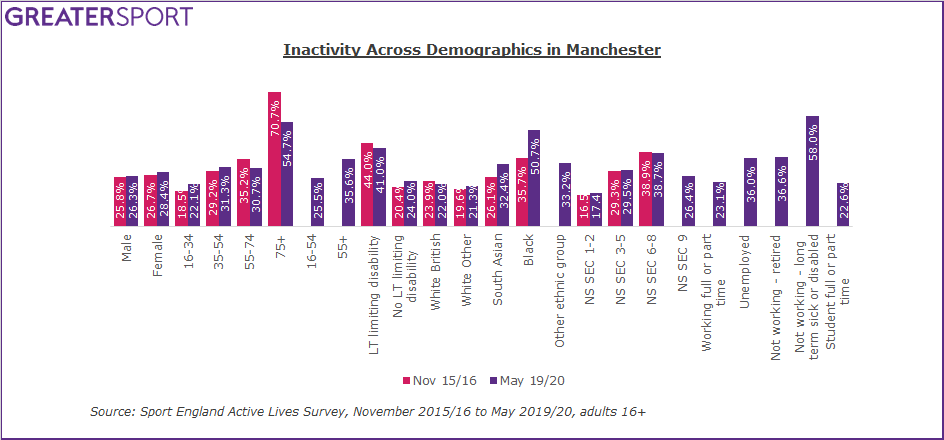Manchester Adult Activity Levels May 2019/20
The latest Active Lives results published by Sport England shows that 72.6% of adults in Manchester are active for at least 30 minutes a week, this equates to 320,200 adults moving. This is a decrease of 5,500 from 12 months ago.
Manchester Overview

The latest Active Lives Release, May 2019/20, has seen an increase (2.1%) in the inactive population in Manchester in the last 12 months. Manchester has seen the percentage of people moving, active for at least 30 minutes a week, decrease by 1.1% since Active Lives began (November 2015/16) in comparison Greater Manchester as a whole has increased the moving population by 0.5% in the same time period.

Inactivity Across Demographics
The largest inactivity gap amongst adults in Manchester is the age gap with a 32.6% gap, the smallest is the gender gap with a 2.0% gap.
6.6% disability gap decrease since Nov 15/16
The inactivity disability gap in Manchester is 17.0%. This narrowing of the gap is a result of higher rates of inactivity amongst those with no long term limiting disabilities (+3.6%) and a decrease in inactivity amongst those with a long term limiting disability (-3.0%).
1.2% socio-economic gap decrease since Nov 15/16
The inactivity socio-economic gap in Manchester is 21.3%. This decrease has been driven by an increase in inactivity amongst higher socio-economic groups (+0.9%) and a decrease in inactivity amongst lower socio-economic groups (-0.2%).
19.6% age gap decrease since Nov 15/16
The inactivity age gap in Manchester is 32.6%. This decrease has been driven by an increase in inactivity amongst 16-34 year olds (+3.7%) and a decrease in inactivity amongst over 75's (-15.9%).
1.1% gender gap increase since Nov 15/16
The inactivity gender gap in Manchester is 2.0%. This increase is a result of female inactivity increasing (+1.6%) at over three times the rate of male inactivity (+0.5%).
Overall, the largest inactivity gaps are amongst those not working - long term sick or disabled (58.0%), over 75's (54.7%) and those from a Black background (50.7%). The lowest levels of inactivity are amongst those from higher socio-economic groups (17.4%), NS-SEC 1-2, those from a White Other background (21.3%) and White British background (22.0%).

